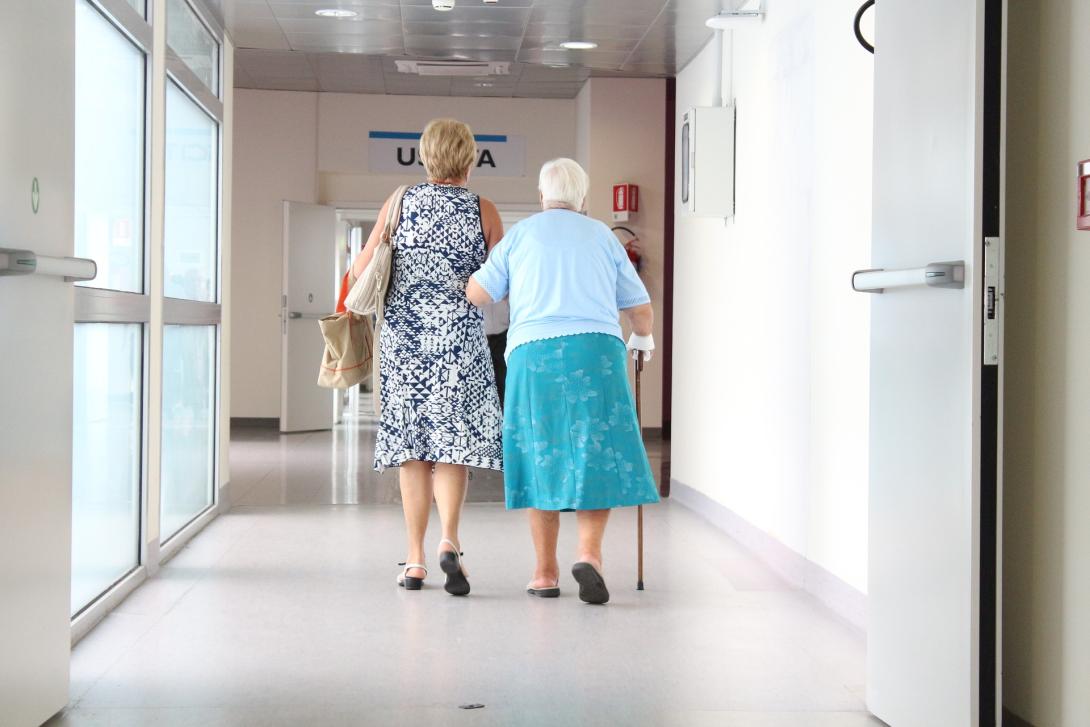Occupational therapists have long been acknowledged to be a crucial factor in reducing hospital admissions. Here, Richard Turner asks whether more efficient technology-enabled care is the solution for the workforce?
Worrying stats have surfaced that suggests the NHS is spending £820 million on keeping patients in hospital, when they no longer need acute care. The reason? The system of transitioning patients from hospital to home can’t operate effectively due to the extensive cuts to adult social care that local authorities have been forced to make. Occupational therapists (OTs) are finding themselves too stretched to undertake primary elements of their jobs and as such, the work they are best placed to do becomes difficult to execute – sitting instead with hospitals who care for patients long after they should have been discharged.
OTs have long been acknowledged to be a crucial factor in both reducing hospital admissions and ensuring that patients are able to transition from hospital to home, in a caring and supportive way. Investing in OTs takes a huge amount of pressure off a thinly-spread NHS. The number of OTs employed in the UK has been steadily decreasing, as austerity measures impact easy-to-target social care. This results in thousands of bed days lost every year due to patients remaining in hospital longer than needed and for those who are working as OTs, the workload has become increasingly pressurised. In our recent survey, 66 per cent of OTs said they don’t have time to fulfil the full range of work they feel is core to their job.
The funding shortfall for adult social care should alarm everyone with a vested interest. That is not just those working within the sector; it’s anyone with an increasingly elderly relative. Or even those approaching old age. Because this will affect us all, if the gaps are not filled. Despite the promise of cash injections up until 2020 for adult social care The Health Foundation Think Tank, Nuffield Trust and King’s Fund have estimated a £2.1 billion spending gap by 2019/20 – it is hardly a wonder that OTs are at capacity.
Collaborative working
In the UK our ageing population is projected to increase by 20 per cent by 2024. To prepare for this, it seems that we need to take a holistic view to the healthcare system; looking at how the NHS and adult social care services can work together to meet the current challenge. Services, technology and resources can bridge the gap between hospitals and at-home care, relieving the pressure on occupational therapists and allowing them to focus their efforts on areas of highest priority.
We recently conducted some research into OT pressures, and asked what support would be most useful to them, freeing up their time for more pressing tasks and reducing risk of further problems for the patient. Help conducting thorough home assessments were voted most highly, followed by increased access to technologies such as personal alarms and the supply and fitting of digital platforms around the home which can ensure the safety of the elderly and vulnerable and reduce the need for face to face care.
Generally, the digitisation and introduction of better technologies to the health and social care sectors is a hot topic. Whether it is through improving the efficiency of patient-facing processes to protecting our health systems from cyber-attacks, the need for everything to move faster and smarter is pressing. NHS Digital proposes this can happen by better integrating health and social care so that technology is shared, transferable and accessible between the two.
The Royal College of Occupational Therapists reported earlier this year that occupational therapists are making good use of technology, despite fears that those aged 65 and over were not interested in it, and it is increasingly part of their role to recommend technology enabled care and encourage independent living. When we asked occupational therapists how they source the information they need to help patients leave hospital, 93 per cent said they refer to information provided by their local authorities and social services, making it clear that if we are to make the most of technology-driven success and boost its use further – the message needs to come from local authorities.
In turn, should OTs feel they are able to perform their jobs better and more effectively there is the possibility that this will also have a knock-on effect for improving recruitment issues found with these roles. A report by Health Education England and The Royal College of Occupational Therapists highlights vacancy rates for occupational therapists are as high as 40 per cent, with fears that Brexit could only make this worse. It seems to us, it has never been a better time to actively incentivise this role – making occupational therapy more attractive for professionals, but also inherently improving the wellbeing of patients and the healthcare system too.
Could technology at-home ensure faster assistance to those who have falls and accidents potentially reducing the severity of the issue? And, can technology increase patient access to day-to-day advice for medical queries, freeing up time for OTs to perform higher impact tasks? Either way, in the efforts to lift strain on occupational therapists and our healthcare system broadly, the role of technology is clear. Through its continued use, we hope to see an improved experience for patients and staff alike.
Richard Turner is managing director at PPP Taking Care.
